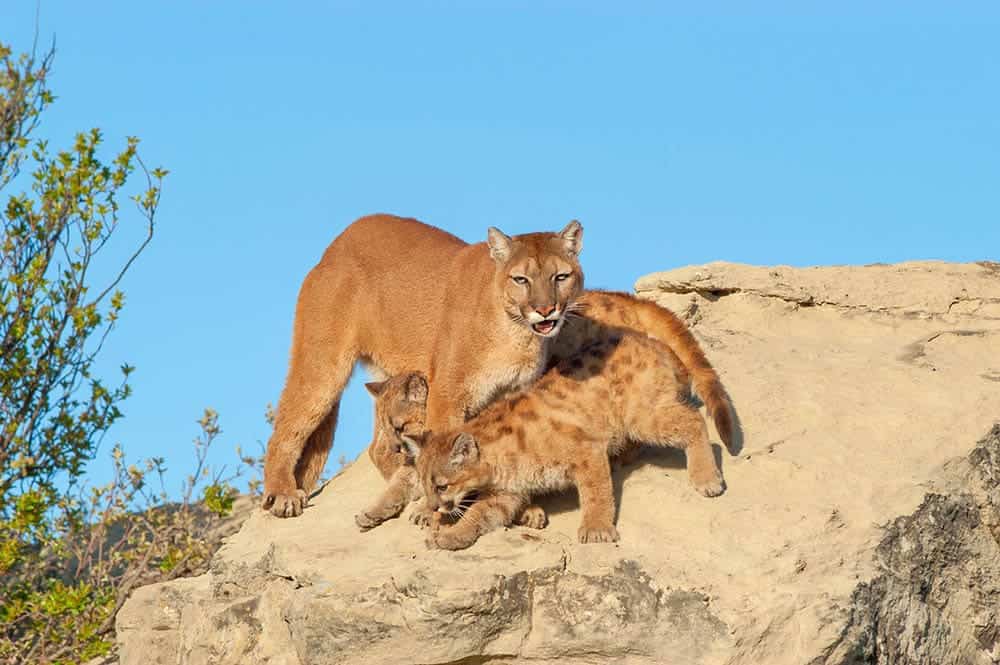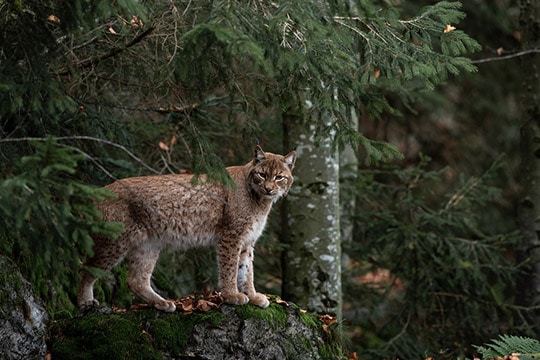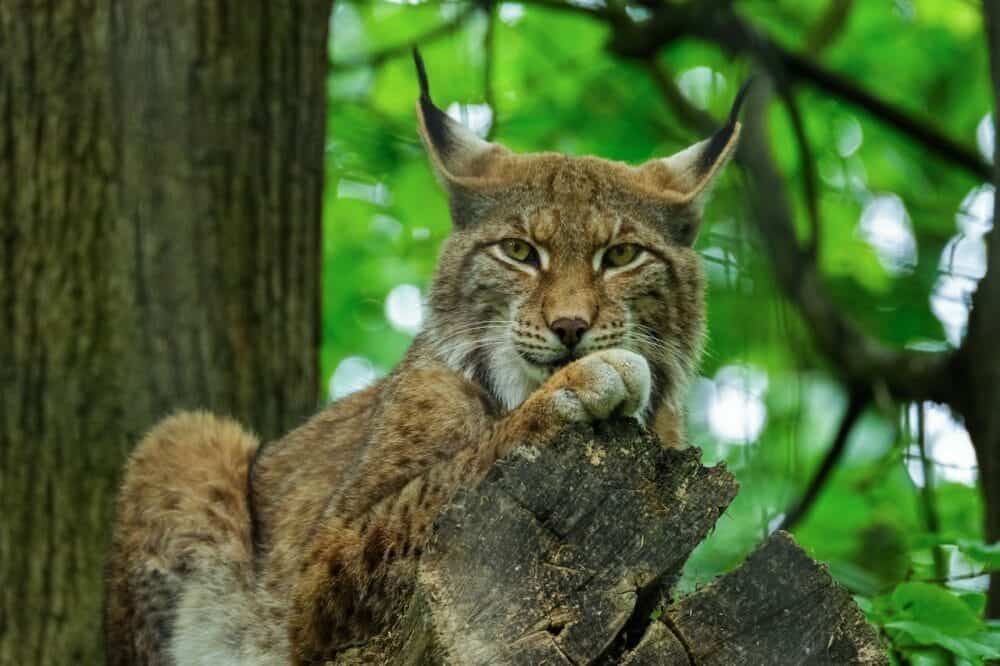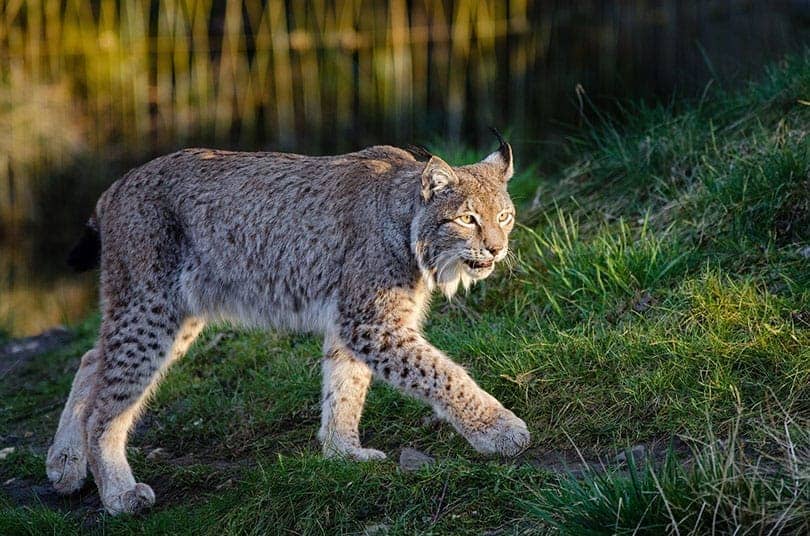Colorado has three native feline species: the bobcat, lynx, and mountain lion. The bobcat and lynx are the most closely related; it’s even difficult to tell them apart, while the mountain lion is the largest of the three.
In this article, we’ll examine each of these wild cats. So, whether you’re here because you think you might have spotted one or are curious about your local wildlife, we hope this list helps quench your curiosity.

The 3 Types of Wild Cats in Colorado
1. Mountain Lion

| Size: | 7–8 feet |
| Weight: | 90–150 pounds |
| What do they eat?: | Deer, elk, porcupines, small mammals, livestock |
Mountain lions tend to be quiet, elusive, and calm and live in remote areas with adequate cover and plentiful deer. In Colorado, they live in areas with pinyon pine, ponderosa pine, mountain mahogany, juniper, and oak brush.
Mountain lions have a light cinnamon color with a black-tipped tail and ears. They’re generally easily distinguishable from other wildcats like the bobcat or lynx because of their long tail, which usually measures one-third of their total length!
It’s estimated that the population of mountain lions in Colorado ranges from 3,000 to 7,000, and opinions on mountain lions have changed through the years. In 1929 they were considered pests, and there was a $50 bounty on them, which changed to their designation as a big game species in 1965.
2. Bobcat

| Size: | 3 feet approximately |
| Weight: | 8–40 pounds |
| What do they eat?: | Rabbits, birds, rodents |
The size of a Bobcat surprises people because they’re only about twice the size of a house cat with a 6-inch tail that seems too long for its body. The tip of their tail is white underneath, with a black spot on top, which is a good way to distinguish them from the lynx, whose tail is all black.
There’s an estimated population of 12,000 bobcats in the state, which means if you see a big cat and you’re unsure if it’s a lynx or a bobcat, chances are it’s the latter because lynx have a much smaller population.
3. Lynx

| Size: | 3 feet approximately |
| Weight: | 16–30lbs |
| What do they eat?: | Snowshoe hares, squirrels, voles, grouse, porcupines |
Lynx are endangered in the state of Colorado, and in the late 1990s, they were reintroduced by Colorado Parks and Wildlife. Snowshoe hares make up approximately 35% to 97% of a lynx’s diet, so if their population changes, the lynx numbers fluctuate.
Apart from the difference in their tails, looking down at the animal’s lower body is an excellent way to distinguish the lynx from the bobcat. Lynx have massive feet, and they look out of proportion with their body. Lynx are also fantastic hunters and can spot a mouse from 250 feet away.
It’s estimated there are 150-250 lynx in Colorado and they’ve been released wearing radio collars to help CPW (Colorado Division of Parks and Wildlife) track them, so a collar is a good giveaway that you’re looking at a lynx, not a bobcat.

The 5 Ways To Keep Your Pets Safe From Colorado Wild Cats
Wild cats can’t distinguish between wild prey and your beloved house pet. Bobcats, panthers, and lynx can attack dogs and cats.
You don’t have to live in fear or keep your pets indoors 24/7. Understanding a wild cat’s behavior can prevent an encounter with one. Here are 5 ways you can keep your pet safe from wild felines.
- Spend time outside during daylight: Bobcats, panthers, and lynx tend to lay low during the day. They are often out and about at dawn, dusk, and nighttime. Be cautious or avoid long walks during wild cats’ active times.
- Don’t let your pets roam freely: Keep them on a leash or a tie-out. Most dogs don’t mind leashes, but cats can be another story. Cat harnesses often have multiple buckles and are cumbersome to get on and off. Your kitty may appreciate a vest-style cat harness with velcro fasteners.
- Remove food sources: Bobcats, panthers, and lynx will go wherever they can find food. Store your trash cans inside your garage or shed. Don’t leave food outside. If you have domesticated chickens, bring them inside at night.
- Clear away thick brush: Wild cats like to hide, so don’t give them the opportunity. An open yard free of brush, shrubs, and other debris is a natural deterrent.
- Scare away any wild cats you see: You want wild felines to be afraid of people and residential areas. If you spot a wild cat, make some noise. Yell, clap your hands, or use an air horn.

Conclusion
There are three wild cats you’re likely to stumble upon if you go looking for them in Colorado, but we suggest you don’t do that. The mountain lion is a giant compared to the lynx and bobcat, but that doesn’t make them any less dangerous. Even though the bobcat looks like a domesticated cat, it’s a wild animal. Colorado’s wild cats are definitely animals you should appreciate from afar.
Featured Image Credit: skeeze, Pixabay
